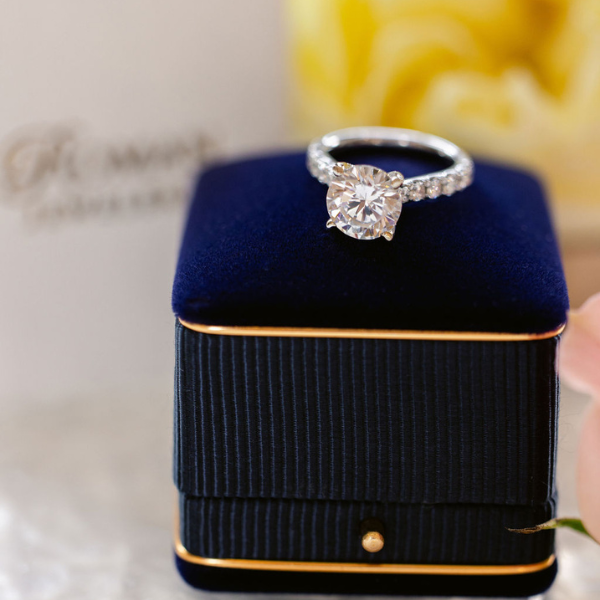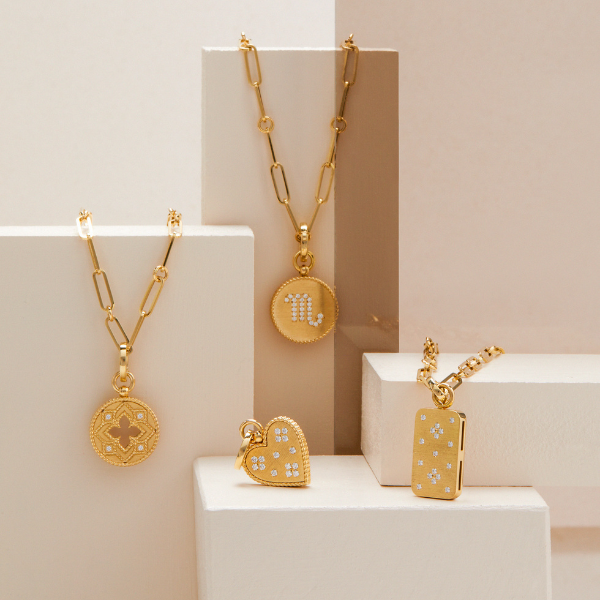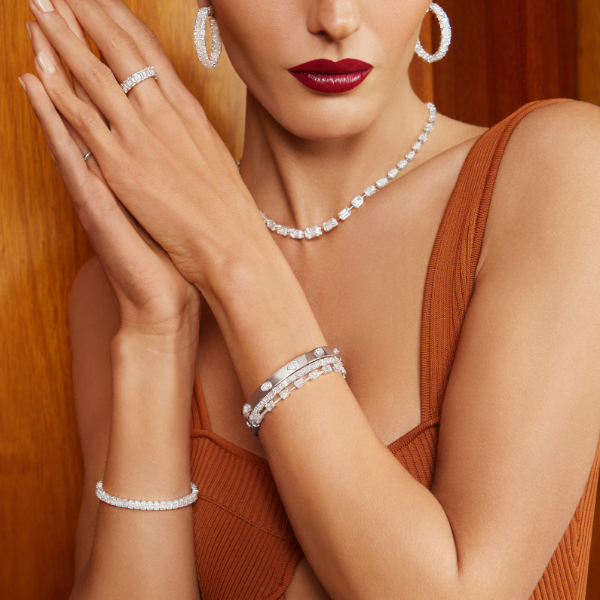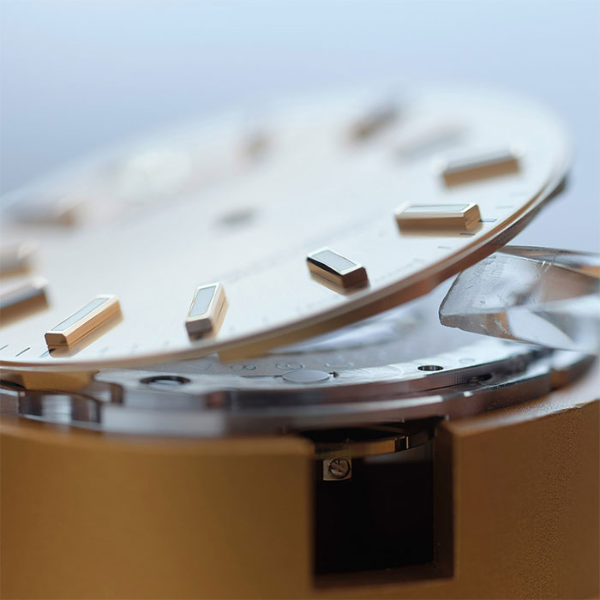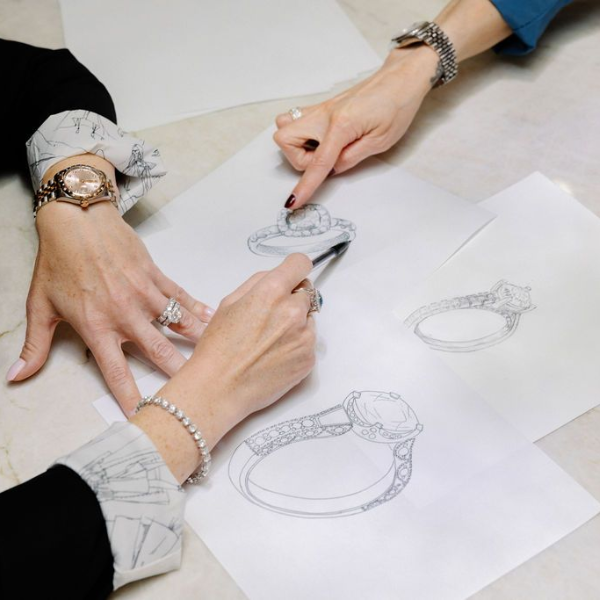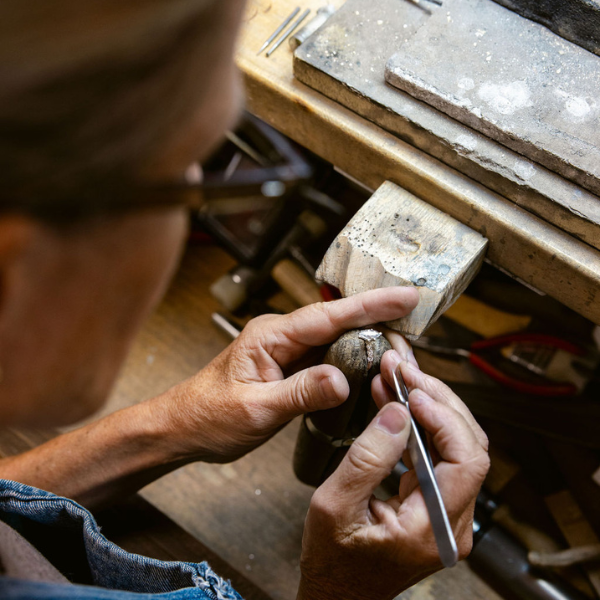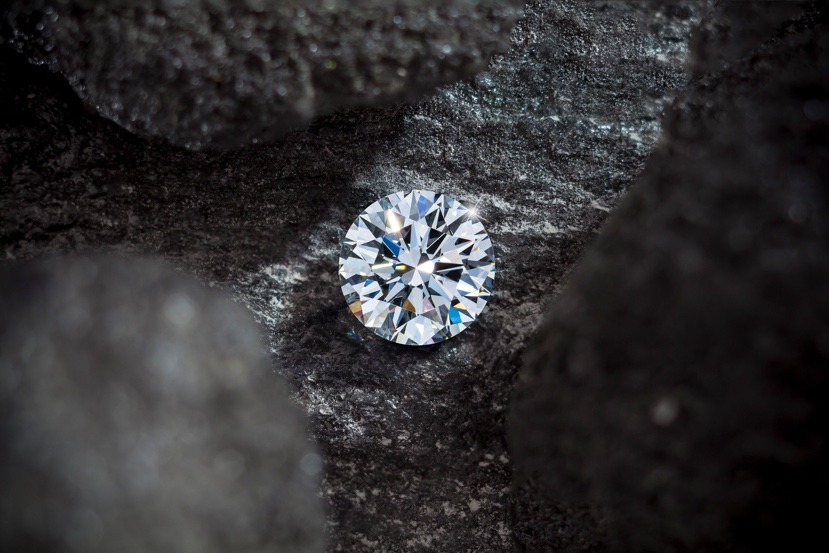Diamonds have been revered for centuries for their beauty, rarity, and strength. But beyond their sparkle, there's a world of fascinating facts waiting for you to learn. Read on for more:
Diamonds are Tough Cookies!
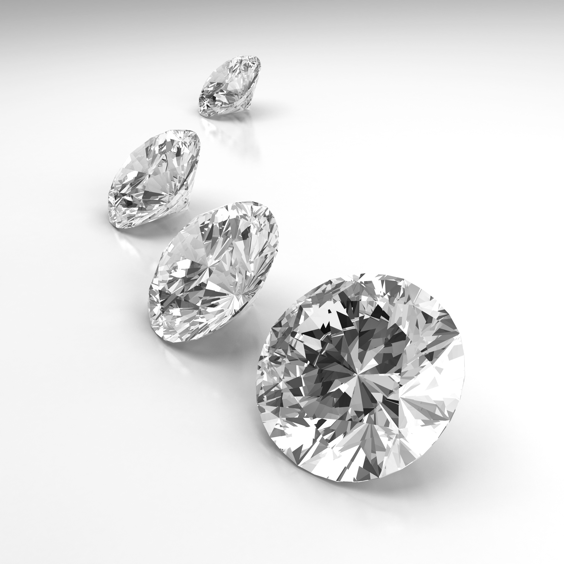 Diamonds are the Earth’s hardest natural substance. It's a fun challenge to find another mineral that can scratch a diamond.
Diamonds are the Earth’s hardest natural substance. It's a fun challenge to find another mineral that can scratch a diamond.
Spoiler alert: Only another diamond stands a chance! I will try and explain the idea of how diamonds can be so hard without diving too deep into the the science...
Each carbon atom that makes up a diamond has 4 electrons attached to it. Think of these like one half of a puzzle piece. Each of these electrons are shared with another carbon atom (the other piece of the puzzle) to create a very rigid structure (if you want to impress your friends, the term is 'tetrahedral').
This is, at an atomic level, what gives diamonds their rigidity and hardness. It is very hard to break apart something with such a tight crystalline structure. Imagine having such unbeatable resilience...if only my willpower was that strong I would never have another chocolate chip cookie ever again! Diamonds truly are nature's wonder.
Born Deep Within
Diamonds develop around 100 miles below the Earth's surface. This beloved gemstone makes its spectacular entry into our world via volcanic explosions.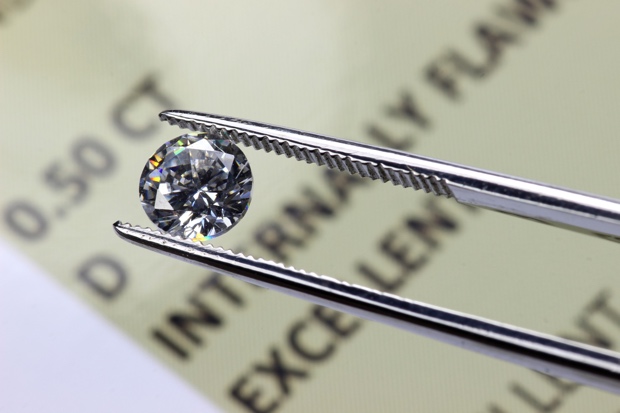
Mother Earth certainly knows how to make a grand entry for her gemstones! This extraordinary journey begins when carbon atoms connect in a precise crystal structure over millions of years under extreme heat and pressure conditions. Kimberlites are diamond-bearing rocks that form deep within the mantle of the Earth. These kimberlites are transported to the surface by volcanic eruptions, bearing diamonds with them. It's incredible to think that every diamond we see and wear has had such a fiery and ancient journey from the depths of our planet to the palm of our hands.
Purely Elemental
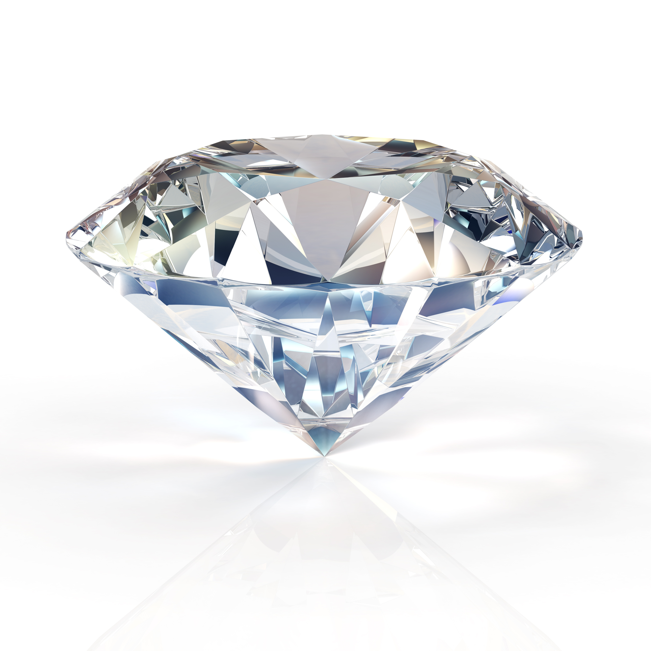 Often times, the beauty of something is in it's simplicity.
Often times, the beauty of something is in it's simplicity.
Diamonds are incredibly unique in that they are made up of only one single element: pure carbon.
It's astonishing how such elegance can come from such a simple recipe. Imagine the best food you have ever had, only to find out the entire dish was made up of one single ingredient. You wouldn't believe your eyes!
This unique material is subjected to enormous pressure and great temperatures deep under the Earth's mantle before transforming into the gleaming diamond we treasure.
Unlike other stones that are attractive because of a mix of components, colors or hues, the brilliance of a diamond stems from its unique ability to refract light due to its crystalline structure we talked about before. Surprisingly, the same carbon that makes diamonds is also the building block of life, found in every living organism on our planet.
The diamond is a tribute to the power of simplicity, demonstrating that nature can produce something absolutely spectacular from the most basic materials; or in this instance, material.
Rainbow of Wonders
Diamonds aren't just clear and sparkly; they come in every color of the rainbow. However, if you come across a natural blue, green, orange, or red diamond, know you've found an ultra-rare gem. Talk about nature's colorful surprises! These vibrant diamonds, known as 'fancy-colored diamonds', owe their stunning hues to minute impurities and structural anomalies within the gemstone. For instance, the presence of boron imparts a blue shade, while nitrogen can give diamonds a yellow tint. The rarest of them all, red diamonds, is created through a very rare defect in the atomic structure of the diamond itself. These colored diamonds, especially the vivid shades, can often fetch much higher prices than their clear counterparts. According to the GIA, of the tens of thousands of natural diamonds that have been graded in the last 20 years, only 0.4% of them have been fancy-colored diamonds. And to reinforce the rarity of red diamonds...wait until you hear this...Red diamonds are so rare that less than 30 true natural red diamonds are known to exist! It gives the phrase "you don't see that every day" a whole new meaning, doesn't it? So, while the classic white diamond remains a favorite, there's a whole spectrum of diamond beauty waiting to be explored and admired!
A Name with Meaning

The word 'diamond' did not just come out of nowhere. The term "diamond" has its origins from the Greek word “adamas,” which translates to invincible or indestructible.
This isn't just a nod to its toughness. Many ancient cultures and civilizations believed that precious stones like diamonds bestowed their wearers with courage and strength in battles.
Diamonds are depicted in myths of Greek gods as armor or weapons, and some of the most fascinating stories in mythology contain objects made of diamonds. Chronos' sword, Prometheus' chains, and Heracles' helmet are all made of diamonds, and as such, are also indestructible! Talk about some empowering bling! While humans may be the only ones that adorn themselves with diamonds, the allure of these sparkling gems seems almost universal across cultures and histories.
A Giant Among Gems
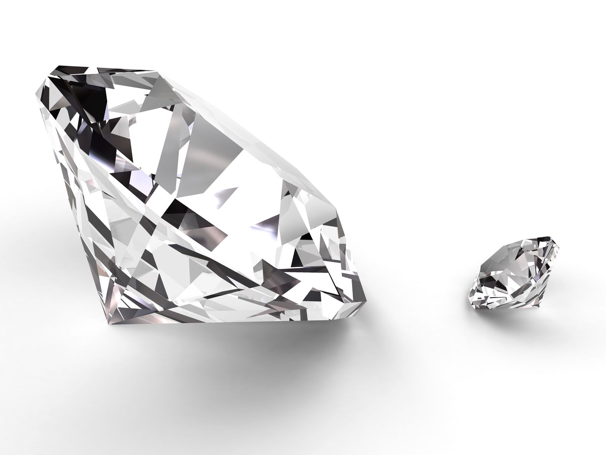 In 1905, the discovery of the Cullinan diamond took the world by storm. Weighing an astonishing 3,106 carats, this behemoth was later cut into nine large diamonds and 100 smaller ones. Imagine the sparkle!
In 1905, the discovery of the Cullinan diamond took the world by storm. Weighing an astonishing 3,106 carats, this behemoth was later cut into nine large diamonds and 100 smaller ones. Imagine the sparkle!
One of the questions you might be asking yourself right now is "how much could such a giant diamond cost?" And I am here to help you with the answer!
The largest of the 9 larger diamonds that was cut from the Cullinan diamond was named Cullinan 1. That diamond currently resides in the British Royal Scepter in the Tower of London.
The price? A whopping 400 million dollars!The diamond weights approximately 1.5 pounds. Now, this might now sound like a lot but think about how small and almost weightless a singular diamond is in a diamond engagement ring or diamond stud earrings, for example. Now picture wearing a 1.5 pound diamond on your ring finger.
Feels heavy, doesn't it? My thoughts exactly...
Romance Set in Stone
The tradition of diamond engagement rings has a fairy-tale beginnings. Mary of Burgundy was the lucky recipient of the first diamond engagement ring in recorded history, presented by the Archduke Maximilian of Austria.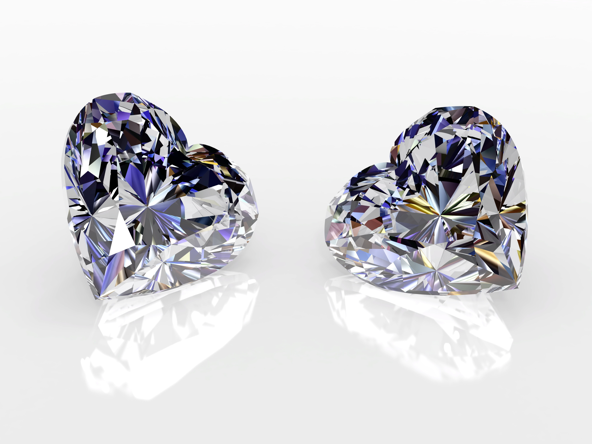
This took place back in 1477 which means diamond engagement rings have been a universal symbol for love and devotion for over 500 years!
Despite this incredible gesture of love, it still took a few hundred years before diamonds became the mainstream engagement item of choice. The demand for diamonds surged after World War II, thanks in part to marketing campaigns that promoted them as the ultimate symbol of love and commitment. Diamond engagement rings did not become a typical sign of marriage commitment until after De Beers' advertising campaign in the mid 20th century. The allure of diamonds is now universal, from the glamour of Hollywood to the mines of South America, proving that these gems have an enduring, global appeal. A gift that truly sets a timeless trend!
The United States is the World's Largest Diamond Market
The United States sure does love its diamonds! The United States of America is currently the world's largest diamond market.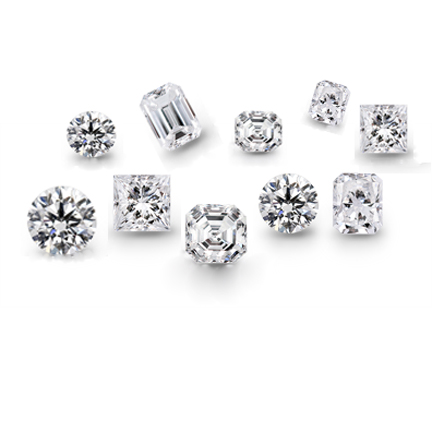 Despite the fact that it is not a major source of diamond mining, the United States has a strong need for these beautiful stones. This passion is visible in its dominance in diamond retail, from engagement rings to luxury jewelry in all forms. Cultural standards in the United States have entrenched diamonds in American culture as symbols of love and devotion. Indeed, New York City's Diamond District is a well-known center for diamond trade and commerce, attracting buyers and sellers from not just the country, but from all over the world.
Despite the fact that it is not a major source of diamond mining, the United States has a strong need for these beautiful stones. This passion is visible in its dominance in diamond retail, from engagement rings to luxury jewelry in all forms. Cultural standards in the United States have entrenched diamonds in American culture as symbols of love and devotion. Indeed, New York City's Diamond District is a well-known center for diamond trade and commerce, attracting buyers and sellers from not just the country, but from all over the world.
Much like hot air balloons rising into the sky, the popularity of diamonds in The United States has soared over the years, capturing the imagination of people across the nation. Shine on, America!
A Sparkling Planet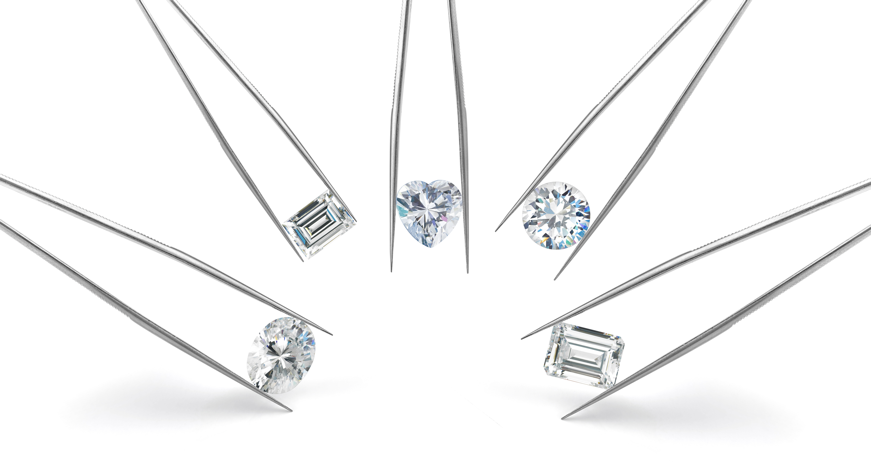
In 2004, the cosmos revealed a treasure right out of a science fiction novel: a planet thought to hold diamonds totaling more than three times the Earth's mass! This celestial wonder, known as "55 Cancri E," is located approximately 40 light-years distance in the constellation Cancer, circling its sun-like star, 55 Cancri A. But what makes this discovery stand out? The incredible makeup of the globe. Because of the tremendous pressures and unusual circumstances within its atmosphere, a major portion of 55 Cancri e's interior is expected to be composed entirely of one material: diamond!
This discovery is so incredible for so many reasons!
Aside from the fact that a planet made of diamond actually exists, 55 Cancri E broadens our perception of what is truly possible in our universe. It's a tribute to the universe's unexpected and delightful surprises. Who knows what we will discover and learn in the future! While we may not be embarking on interstellar diamond-mining missions anytime soon, 55 Cancri E serves as a brilliant reminder that the universe's wonders frequently exceed even our wildest fantasies.
Lab-Grown Wonders
Massive mines, deep excavations, and a very very (did I mention very?) long creation process may spring to mind when you think about diamonds.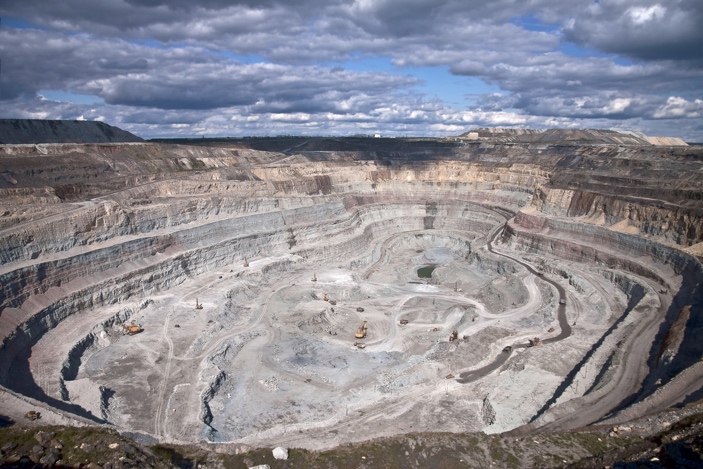
Well, let's change that! Current technology and innovation have caused the diamond industry to experience a dramatic transition. If you think diamonds can only be mined, think again!
Enter the world of lab-grown diamonds. Contrary to popular belief, these gemstones are not simply cubic zirconia. They have the same chemical, physical, and visual properties as mined diamonds.
Using modern technology, scientists working in diamond laboratories can now replicate the environment under which diamonds naturally form within the Earth.
The end result? Diamonds with the same radiance, durability, and brilliance as natural diamonds, but without the hefty price tag. These lab-grown gemstones are more than simply symbols of love and luxury; they also represent our ability to evolve and to reimagine age-old traditions and marry (see what I did there) them with modern technology.
Seeing Isn't Always Believing...
Trust us, even the most discerning eyes struggle. It's almost impossible to differentiate between a lab-grown and a mined diamond just by simply 'looking'. To the untrained eye, both lab-grown diamonds and mined diamonds display the same bright sparkle and fire, whether formed deep under the Earth's mantle or precisely produced in a high-tech laboratory. Because their atomic makeup is identical and they are cut just like natural diamonds, lab-grown diamonds refract light in the same fascinating way, resulting in the brilliance that all diamonds are known for. This presents an intriguing challenge for customers. The lab-grown diamonds offers a cost effective solution without sacrificing quality or beauty.
The only drawback? Lab grown diamonds, historically, do not retain their value. This is a direct contrast to natural diamonds, whose rarity and scarcity make it a much more sought after gemstone rather than one mass produced in a lab, regardless of the overall quality of the stone itself. So which diamond is right for you; the natural mined diamond or the lab-grown diamond? The choice is strictly yours.
But not to worry! Most reputable jewelry stores, jewelers and diamond dealers have specialized equipment to tell which diamonds are made naturally and which are made in a laboratory.
Real and Radiant
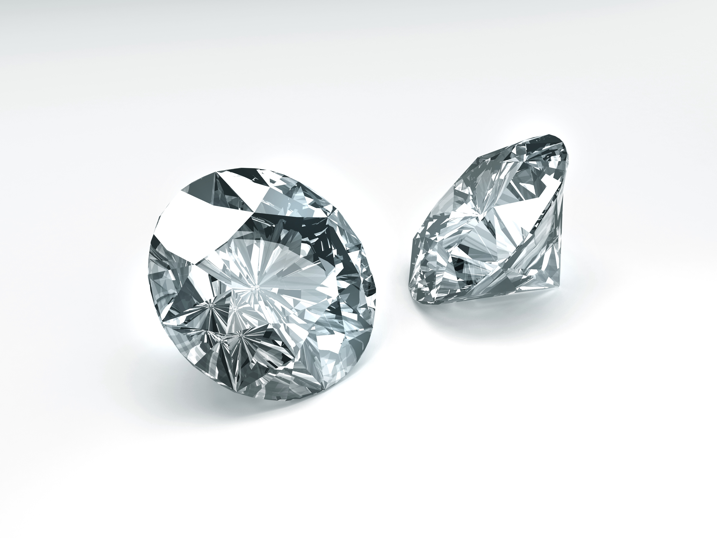
Dispel any myths you may have heard and any doubts you might have: lab-grown diamonds are not imitations or fakes. They are supposed to look like diamonds because...well...they are diamonds! They are just made in a different environment. As far as gem quality goes, they are still the same stones that adorn crown jewels and have been used for centuries. A diamond seed, a small slice or portion of a diamond, is at the heart of the development of a lab-grown diamond. A small fragment of a natural diamond is used as the seed that the tree (in this case, a diamond) is then grown from. Diamonds, whether given to a loved one or worn as a statement piece, have captivated our hearts and minds for ages. Their formation, properties, and the myths and facts surrounding them make these gems even more intriguing. When it comes to fun facts about diamonds, I'd like to think my list (just like the diamond of your dreams) made you smile. From the depths of the Earth to the vastness of our universe, diamonds indeed have left an indelible mark of wonder on our lives. Whether you're gazing at a lab-grown beauty or a natural masterpiece, remember: every diamond has a story, and it's that very same story that's worth treasuring.









